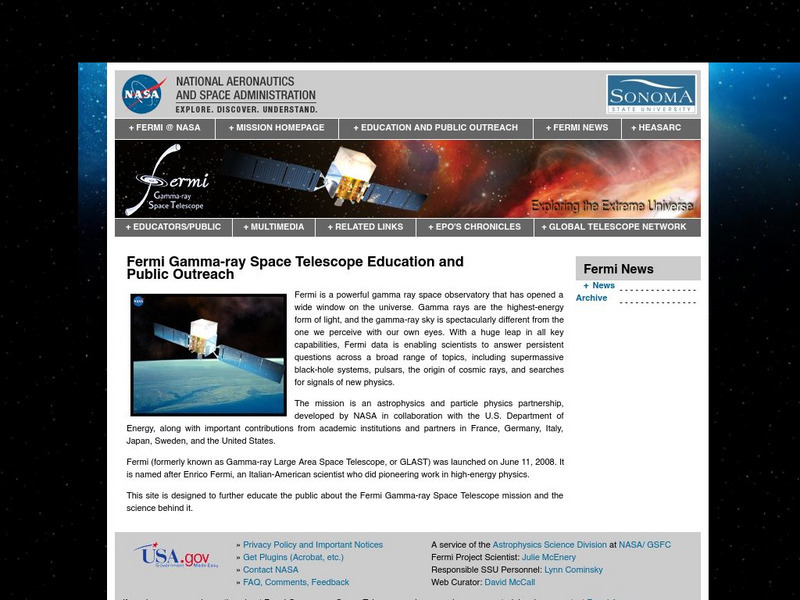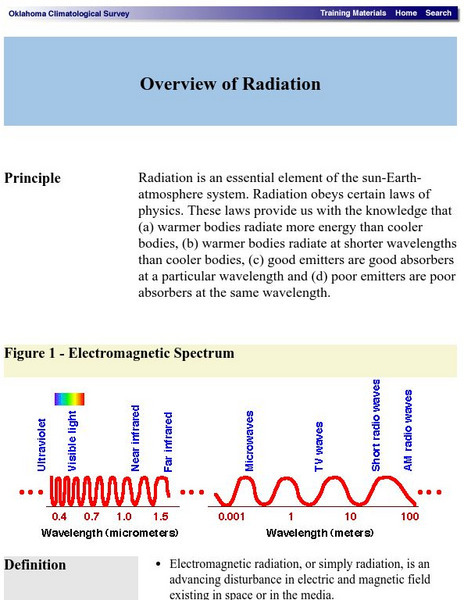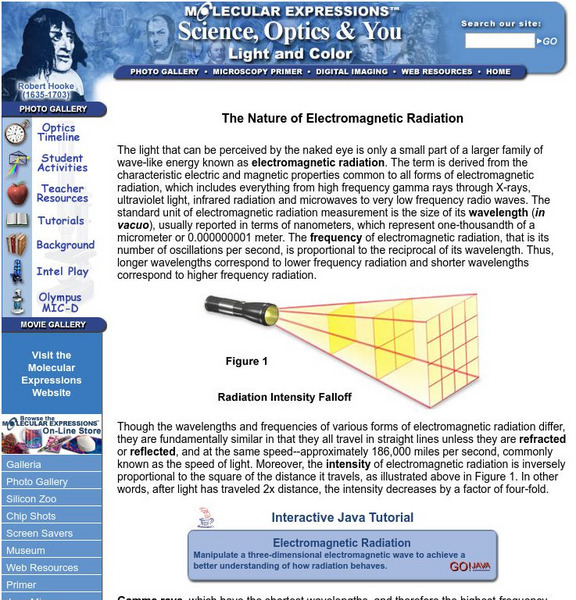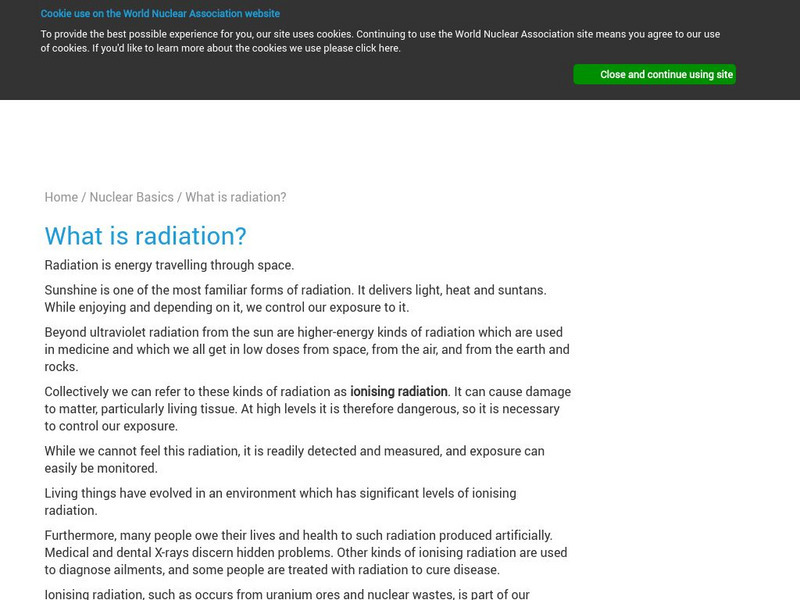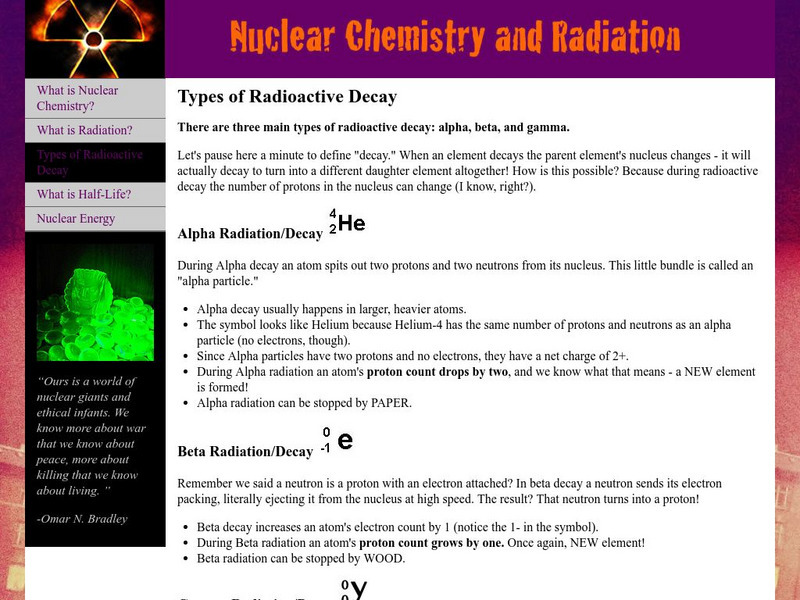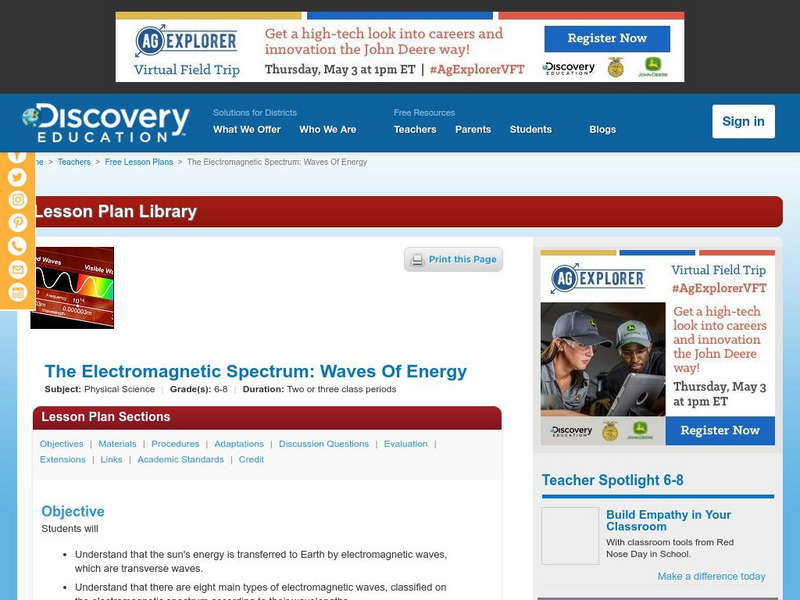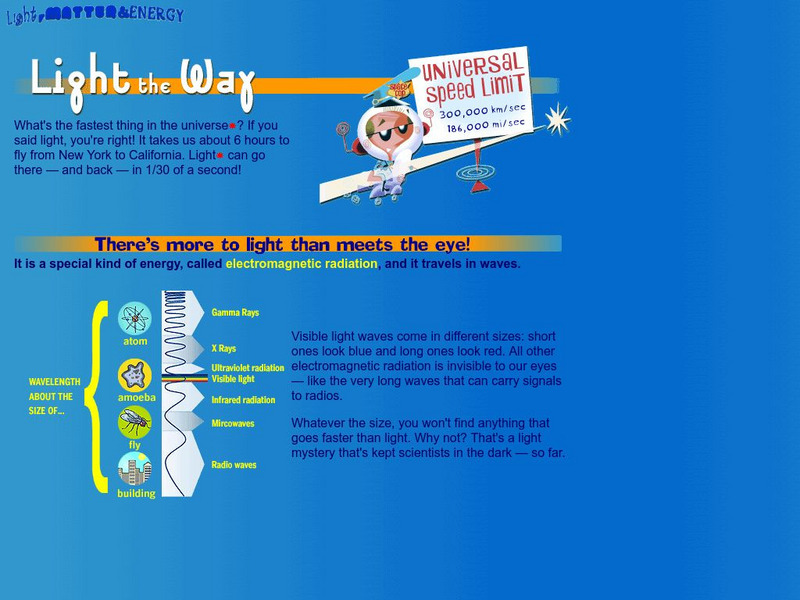Texas Education Agency
Texas Gateway: Radiation Types
Given illustrations, diagrams, or descriptions, students will identify alpha, beta, or gamma radiation.
CK-12 Foundation
Ck 12: Physical Science: Gamma Decay
[Free Registration/Login may be required to access all resource tools.] Explains how and why gamma decay occurs, what gamma rays are, and why gamma radiation is the most harmful.
PBS
Pbs Learning Media: Gamma Ray Burst Theories
This video segment from Swift: Eyes through Time introduces and explains theories of the origin of gamma-ray bursts. [4:11]
Other
Nrc: Unit 1 Radiation
This site has lesson plans and activities related to radiation. Activities include measuring radiation with a Geiger counter and observing radiation 'footprints' in a cloud chamber.
Woods Hole Oceanographic Institution
Woods Hole Oceanographic Institution: Radiation and Human Health
Interactive explores the exposure of radiation to the human body and its effects both indirect and direct. Find out the sources of radiation that people are exposed to daily.
Idaho State University
Idaho State University: Gamma Radiation
A good illustration and a simple explanation of gamma-ray decay.
NASA
Nasa: Imagine the Universe: The History of Gamma Ray Astronomy
This NASA article discusses the history of gamma-ray astronomy. Related resources.
Sonoma State University
The Gamma Ray Large Area Space Telescope (Glast)
Background information on gamma rays and the sources of gamma rays in the universe. Discusses the purpose of the GLAST space mission and the types of findings which they wish to make. A link to the GLAST movie provides an excellent...
Oklahoma Mesonet
Oklahoma Climatological Survey: Overview of Radiation
This site details what radiation is, the physics of radiation, and radiative transfer as it occurs in nature. Content explores the electromagnetic spectrum, electromagnetic waves, properties of radiation, and solar radiation.
Read Works
Read Works: Electromagnetic Radiation
[Free Registration/Login Required] An informational text about electromagnetic radiation and the effects it creates. A question sheet is available to help students build skills in reading comprehension.
Science Struck
Science Struck: Types of Radiation
Explains how radiation is produced and the characteristics of alpha, beta, and gamma radiation.
BBC
Bbc: Gcse Bitesize: Radiation Treatment
X-rays, gamma rays and beta particles are all used in medicine to treat internal organs. X-rays are produced by firing electrons at a metal target and gamma rays are emitted by the nucleus of radioactive atoms. Gamma rays are used to...
Florida State University
Florida State University: Nature of Electromagnetic Radiation
This site from The Florida State University provides an informational page on electromagnetic radiation discusses the characteristics and properties of its many forms including X-rays, gamma rays, ultraviolet radiation, infrared...
Space Telescope Science Institute
Amazing Space: Star Light Star Bright: Electromagnetic Radiation
Use this tool to learn facts about the range of the electromagnetic spectrum, from radio waves to gamma rays.
CNN
Cnn: Nasa Announces Missions to Seek Planets, Study Gamma Rays
A news article about NASA's plans to learn more about gamma rays and discover more planets launched in 1999.
Other
World Nuclear Association: Radiation and Life
This article presents illustrations and a general discussion about radiation.
Boise State University
Boise State: Nuclear Chemistry and Radiation: Types of Radioactive Decay
This article with embedded videos provides information about three main types of radioactive decay: alpha, beta, and gamma.
NASA
Nasa: Imagine the Universe: Gamma Ray Astronomy Satellites and Missions
"We present the many satellites which have detected electromagnetic radiation through the 1960s, 70s, 80s, and 90s." Visit this site to read more about the development of satellites throughout the history of gamma-ray astronomy. Graphics...
NASA
Viewing the Violent Universe: What Are Gamma Rays?
The universe produces a broad range of light, only a fraction of which is visible to our eyes. Gamma rays are nonvisible light, which also includes x-rays, ultraviolet light, infrared radiation, and radio waves.
Nobel Media AB
The Nobel Prize: The Nobel Prize in Physics 1935 Presentation Speech
The Nobel Physics Chairman made this speech when presenting the Prize to Chadwick. It clearly explains the importance and depth of Chadwick's work. Site by Nobel e-Museum.
University of California
U.c. Berkeley: Spectra From Space
View the entire spectrum of electromagnetic radiation and get information on telescopes especially designed to view different wavelengths of the spectrum.
Discovery Education
Discovery Education: The Em Spectrum: Waves of Energy
Middle schoolers are introduced to the electromagnetic spectrum through this group research activity. Each group investigates a different wavelength range within the em spectrum and reports back to class. Discussion ideas also included.
TED Talks
Ted: Ted Ed: Radioactivity: Expect the Unexpected
Video explaining the process, risks, and benefits of radioactivity. [4:16] Followed by a short quiz and a list of additional resources to explore.
American Museum of Natural History
American Museum of Natural History: O Logy: Light, Matter, Energy: Light the Way
What is electromagnetic radiation and how does it work? Review a captioned graphic that explains electromagnetic radiation and the visible and invisible types of radiation on the electromagnetic spectrum.






